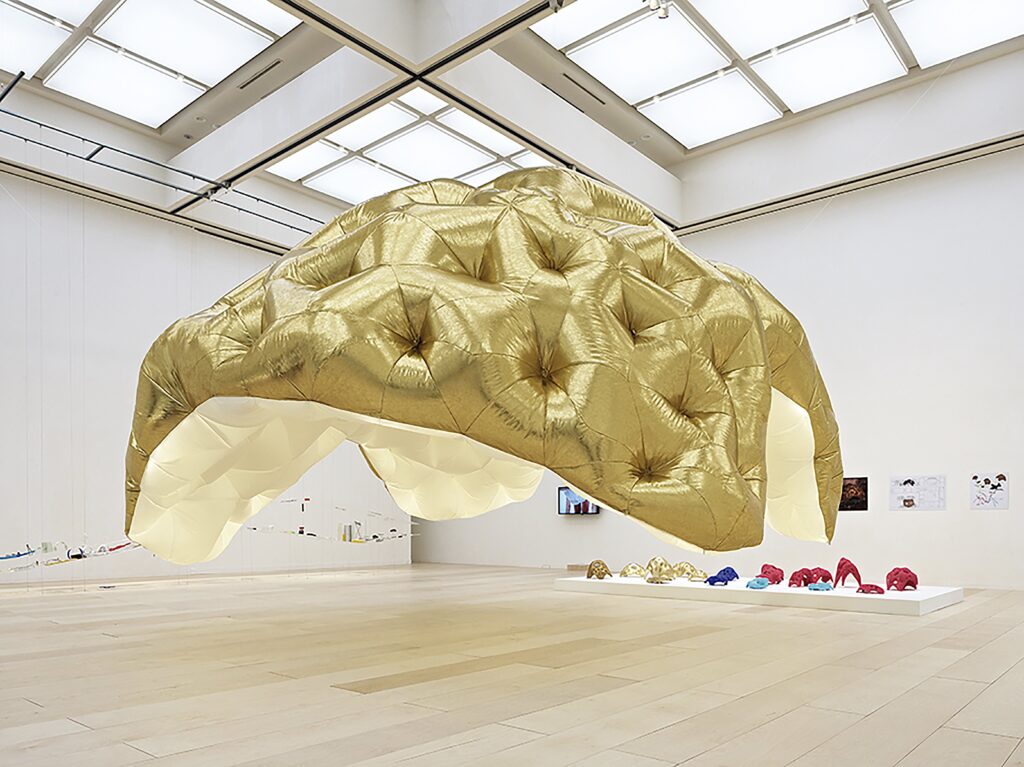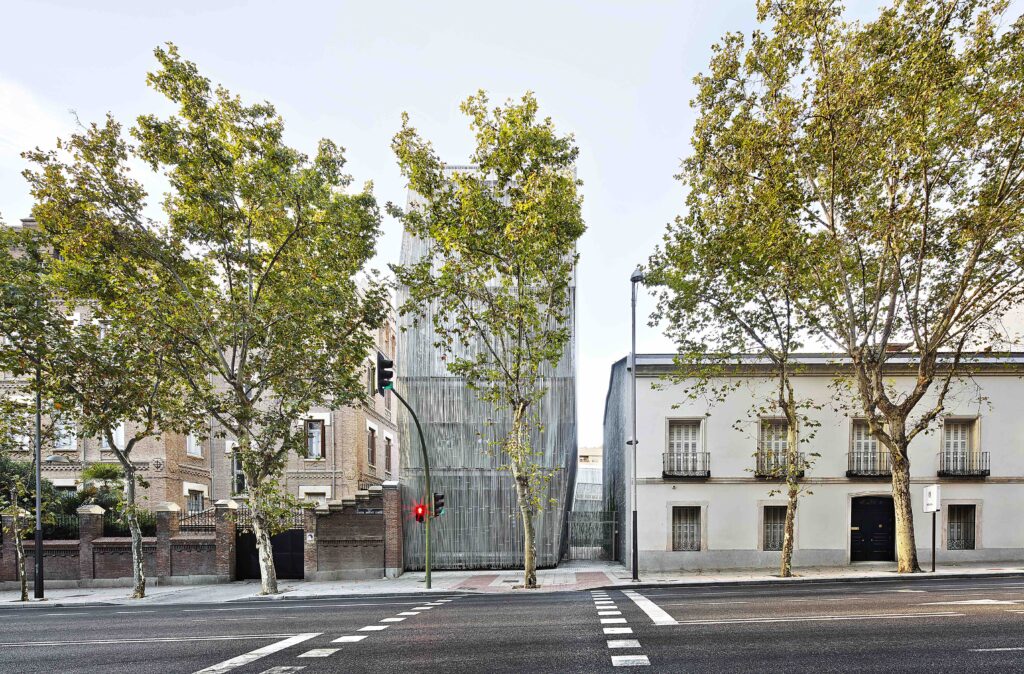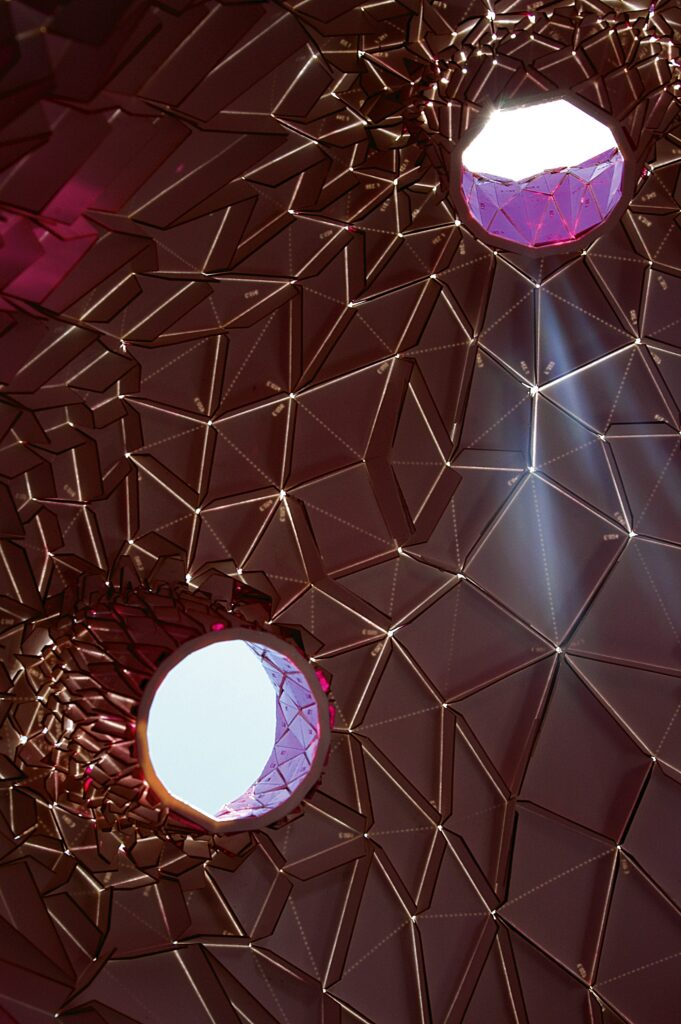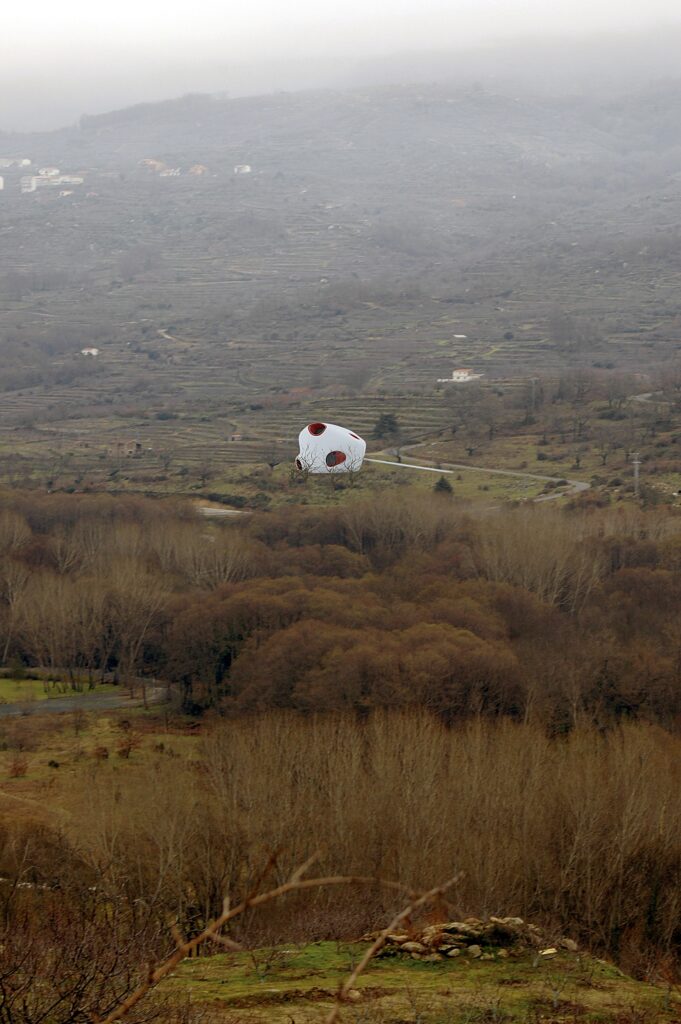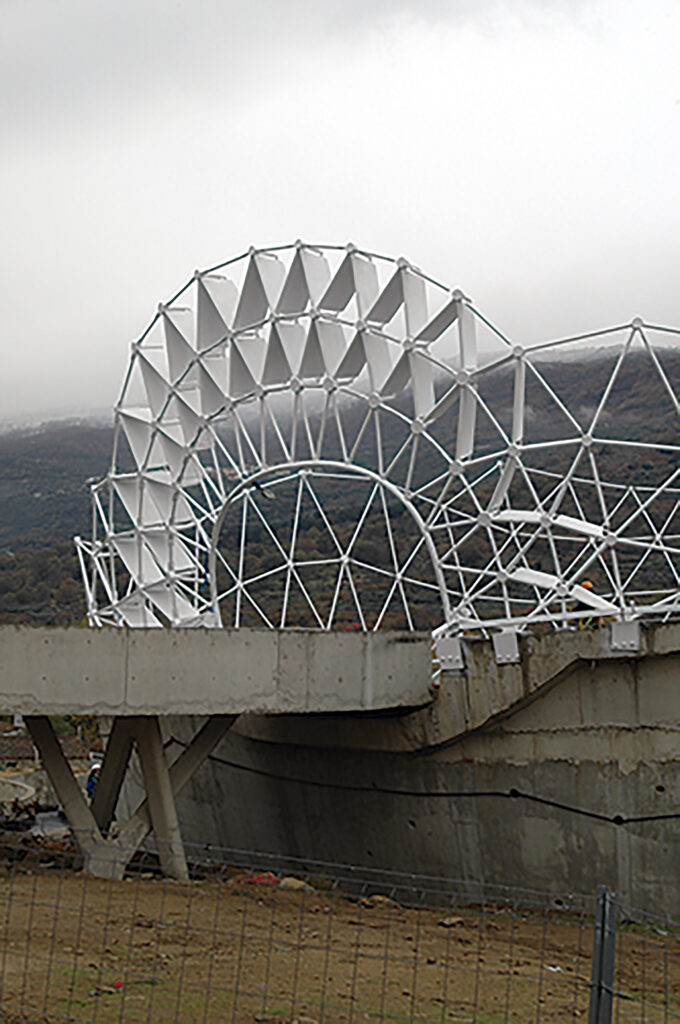We are interested in producing new ideals of beauty, in other words, new poetical images that can renovate our collective assumptions.”
Interview
Platform for experimental architecture Amid.Cero9 has two members: Efrén García Grinda and Cristina Díaz Moreno. They started to work together in 1997 in Madrid, when they were looking for an opportunity and companionship to find their own way out of the current set standards of the traditional and academic field of architecture. Their first joint project was an entry for Parque Regional del Sureste architecture competition. They proposed to erect several slender constructions, towers, that form kind of a visual map of the territory that offered an image for the park as whole. With that work, a common ground was defined. Their architecture is about environment, questioning how nature can trigger architecture. Collective creation and creating with users are also fundamental. Likewise, Efrén and Christina say that architecture is not permanent and time is always important.
Amid.Cero9 considers itself to be a mediator. “Amid” in the platform name means just that: being in between something, between contexts, people, animals, plants etc. Aesthetics can also be a medium, they say. A medium to challenge certain preconceptions, and then architecture becomes a physical and cultural instrument to make certain things happen.
In 2010, they represented Spain at the Venice Architecture Biennale with Cherry Blossom Palace project. One of the poorest regions in Spain, Jerte Valley is famous for its cherry trees. In spring, when cherries are in bloom people have celebrations and the valley becomes full of people from near and far. That gives an identity to the whole region. Amid.Cero9 created a small building to the expansive rural landscape. The pavilion has a strong presence and adds one more layer and focal point to the iconic landscape.
At present, Efrén and Christina work and teach in Madrid and London. At the end of February, they gave a speech in the Open Lecture series at the Estonian Academy of Arts where they presented Institución Libre de Enseñanza / Giner de los Ríos Foundation building. Collective identity and history were defined as the starting point in the given project in which they proposed a spatial system in a series of rooms around an inner garden.
Below they discuss how to create poetry with architecture and why we need ugliness.
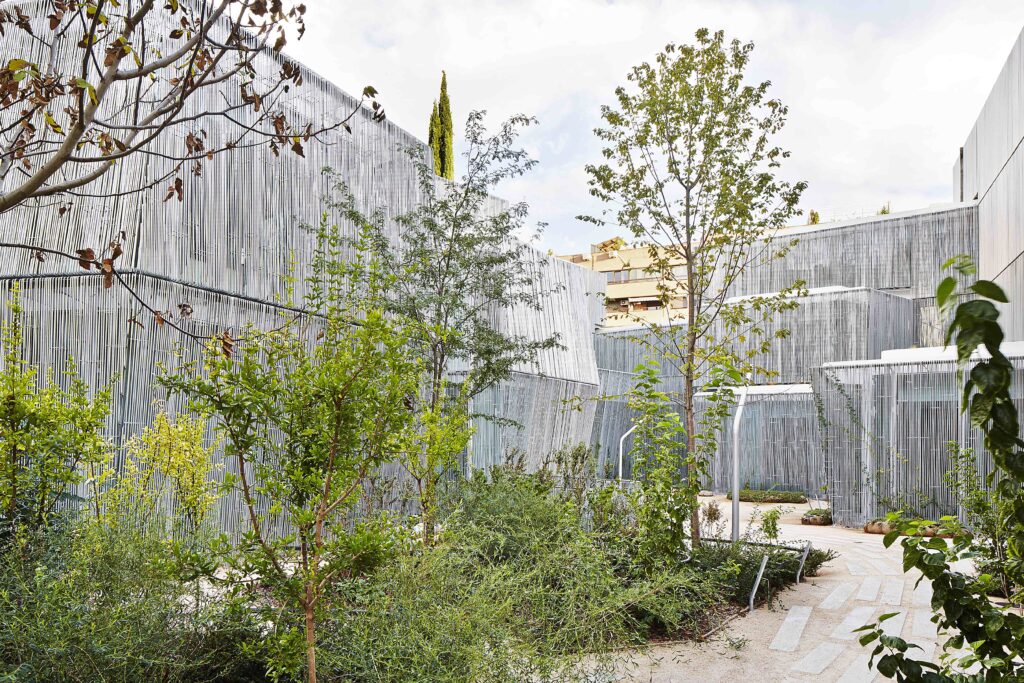
Your approach to architecture was introduced in your lecture abstract as post-digital and after pop. What does it really mean?
Efrén García Grinda: The usage of these terms just refers to our aim to relate every architectural decision with the world around and to the fact that the increasing digitalization of our societies has drastically affected the way we produce, consume and transmit cultural artefacts. We are interested in how much these technologies had brutally transformed our everyday routines and culture, and how much these transformations are affecting the way we inhabit and transform our physical surroundings. It is not an interest in the digital realm coming from a disciplinary understanding, but how to rethink architecture having in mind the profound shift that is happening on everyday basis in our world. The term after-pop was introduced by the Spanish critic Eloy Fernández Porta to refer to a cultural condition that is no longer based on the acquisition of tropes and tools from popular culture but on the access to the vast ocean of information and cultural artefacts that surround us, brought by digital technologies in which the origin and sources of any cultural material are not relevant any more. Our aim is to investigate how all this affects our discipline and how to navigate critically in this new condition.
If we look around, we can probably see someone scrolling their phone. So we can be in a public space (social media) while being home alone. We can tell where this person is physically located, but we have no idea of the virtual exchange happening, where and how every one of us is virtually interacting with others. And all this has invaded our former private spaces and drastically transformed the notion of the public, dismembering the usual assumptions related with privacy, intimacy and physical space.
You gave a speech about how space should build an experience for all the senses. What is the experience you would like to build with your architecture?
Cristina Díaz Moreno: It depends on the project, of course. In case of Giner de los Ríos Foundation building, we carefully constructed the spatial experience within the building that aimed to recreate the garden and the spaces of this legendary page of Spanish culture without any nostalgic approach.
Efrén García Grinda: In this case, we introduced the idea of a garden as a model for the whole building. Gardens are constantly contesting what architecture is: they are everchanging spaces based on living materials, so geometry needs to happen in a different way, the relationship with activities is challenging our common assumptions in architecture, and they are still playful and engaged with body…
Cristina Díaz Moreno: We are really interested in architecture that can carefully construct the experience without imposing it. It is important for us not to end up with just another object-based building but to be capable of providing space in accordance with these social transformations we talked about earlier, also to be capable of connoting and having a further reading without falling into the arbitrary play with languages. It is not only constructing the experience but also providing freedom, affordances and possibilities. We are not aiming to design buildings as amusement parks but as tools for a better life.
In order to design a space that would act as a tool and support the improvement of everyday life you need to know the user very well, as if he is a member of your family. How much time do you spend on research and analysis?
Cristina Díaz Moreno: As much as possible. We simply invest a considerable amount of time in studying and understanding what we are facing in every particular project, from the usual immediate context that includes the client and site to a broader notion of context. Sometimes the requirements and situations can be very difficult, but it helps us a lot to produce a fine-tuned and intelligent response. It always makes a better project. Always.
Efrén García Grinda: It is by definition a collective construction in itself that mobilizes hopes, beliefs and expectations. Instead of repeating traditions and conventions meaningless, our approach usually takes only more effort than usual, but it is deeply engaged with quality. There is a lot of pressure to have finances and resources efficiently managed and ready at the proper time, but we are surrounded by spaces that simply lack quality. Historically, architecture had an important role in building collective identity and indirectly defining who our societies wanted to be, but nowadays, architecture has become a routine management of resources and financial assets and a tool to produce economic revenue. We simply try to question those assumptions that reduce the range of possibilities of our discipline to a managerial, narrow-minded approach. We are not demanding more money to spend on the construction site but deeper commitment and engagement with societal and cultural situations.
Cristina Díaz Moreno: We are looking forward to constructing a close relationship with our clients and we try to engage them deeply in the process. That is very important. On some occasions, our clients do not understand or like what we have proposed, and it is just a matter of convincing and negotiating to get to an agreement. It’s a journey.
Efrén García Grinda: We understand architecture as a collective creation. The client is rarely a single individual but usually a community, a collective body or an entire city. A single architect or a client cannot do this complex process by himself, as an isolated individual. In our understanding, architects are conductors of relations and mediators, someone who is consciously and cleverly dealing with this expanded notion of client and context that firstly intensely studies and tries to understand and then filters, selects and finally materializes a response on behalf of others.
Efrén García Grinda: We wish to be almost transparent, to be more like filters rather than consistently apply personal languages everywhere. We would like to be the ones who channel collective hopes, aspirations and desires, and to do all this in unexpected ways, challenging our collective assumptions. For us it is crucial in order to recover an intellectual role for the architect, to critically contest the mainstream conventions. That is how we understand the artistic role of the architect. We do think that the most interesting artistic practices nowadays are involved in this critical relation with the desires and hopes of the collective realm.
Your Giner de los Ríos Foundation building but also Cherry Blossom Palace are poetic and have so many layers and meanings. It seems in order to do so you need to be flexible and define your style all over again with every project. Would you say that you have a distinctive style?
Cristina Díaz Moreno: I would prefer our architecture to be known as places for normal people. I am not particularly interested in or expecting the professionals’ approval. This critical view usually implies a difficulty with acceptance at the very beginning. The notion of ugliness can be useful to clarify this difficulty. We usually explain that ugly often means the unexpected, unseen before or difficult to assimilate. What produces this aesthetic appreciation is basically a misalignment between our current models of beauty and an artefact that is challenging them. That is why we are so interested in producing new ideals of beauty, in other words, new poetical images that can renovate our collective assumptions.
Efrén García Grinda: We used a steel lattice for the outer cover of the Giner de los Ríos Foundation building. It creates an optical illusion, letting the visitor see the garden from the inside, while it seems barely transparent from the outside. We usually explain that it reproduces the effect of looking through the window on a rainy day. At first, it was perceived as weird, for some people it looked like a jail or the reinforcement of an unfinished concrete wall. But when we started to explain that it is about the reflection, and the visitors understood how it was mediating between the garden and the inner spaces, and experienced its selective transparency and the effects, many of those who had not been convinced started to accept it, and it became one of the most distinctive and appreciated aspects of the building.
In the Cherry Blossom Palace that we proposed for the Jerte Valley, the process was similar. Just after winning the competition, it received names such as the rotten cherry or the meteorite. But then suddenly people started to understand how it was building relationships with the astonishing landscape of the Valley, and the locals started to accept and fall in love with it, as they were engaged in the designing process and the construction themselves. Unfortunately, the construction site was stopped due to the crisis, but they are appealing to the politicians to invest in its construction again. They do want to have this apparently strange presence in there. It has become part of the rural landscape and their understanding of the Valley. They took the idea of the chapel literally and are now eager to use this place for celebrations and as a pilgrimage destination, arranging festivals and celebrations around it.
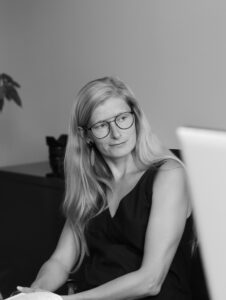
MERLE KARRO-KALBERG is a landscape architect and the editor of architecture of the cultural weekly Sirp.
HEADER: Golden Balloon, ESA Pavillion Special in Paris, 2011. Photo by Daici Ano
PUBLISHED: Maja 97 (summer 2019), with main topic Architecture is an Art of Space

